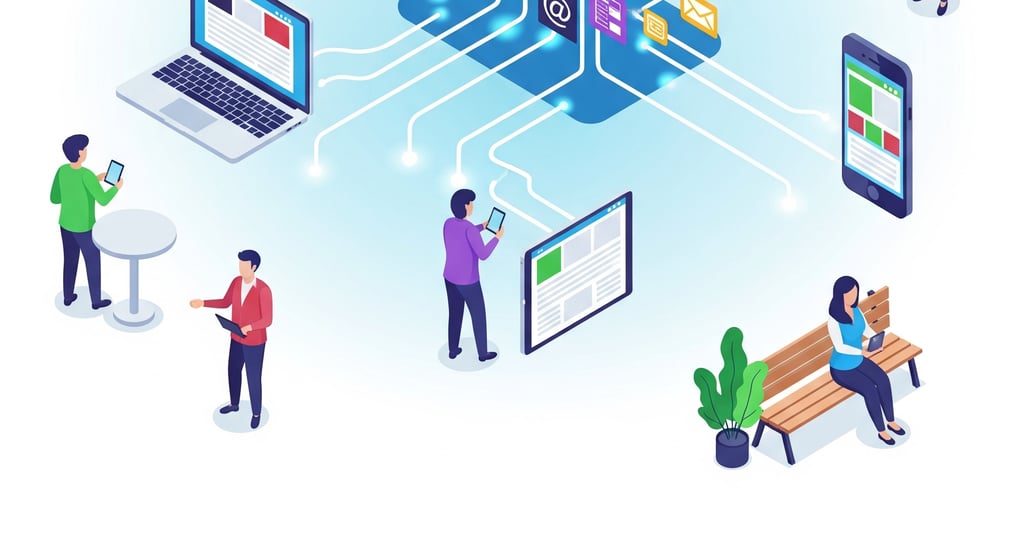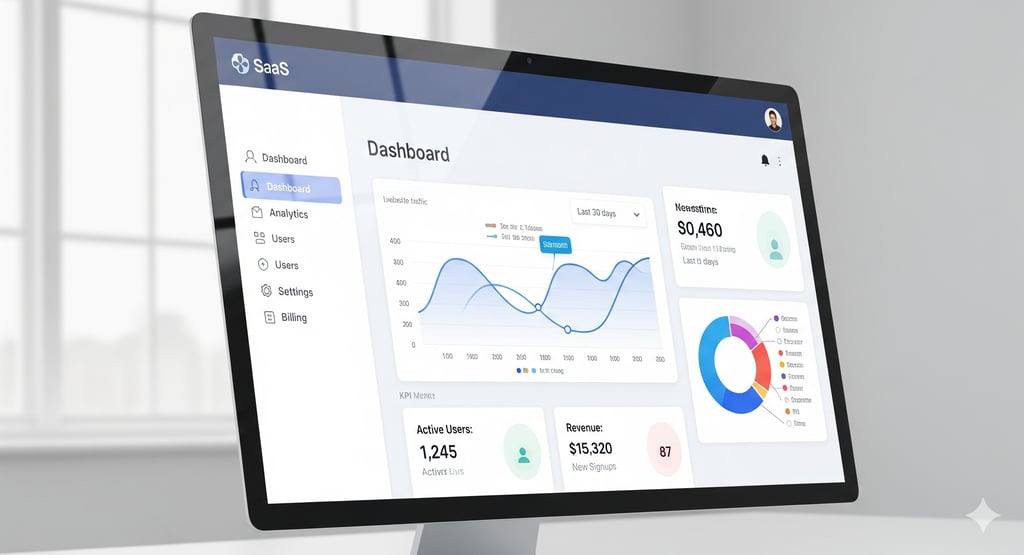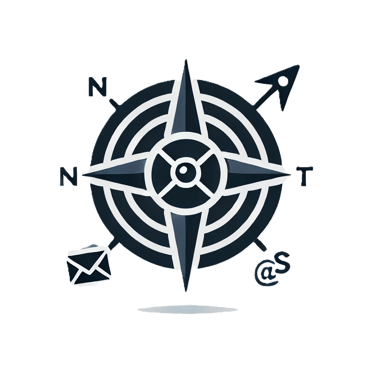What is SaaS? A Beginner's Guide to Software as a Service (2025)
Confused about what SaaS is? This beginner's guide explains the Software as a Service model, how it works, its huge advantages, and how you can use it to build a recurring revenue business.


What is SaaS? A Beginner's Guide to Software as a Service (2025)
Introduction
Have you ever streamed a movie on Netflix, hosted a meeting on Zoom, or stored a file in Dropbox? If so, congratulations—you're already an expert user of SaaS!
But what exactly is SaaS, and why has it become the dominant business model for everything from your favorite apps to powerful enterprise software? More importantly, how can you leverage its power to create a predictable, recurring income stream for yourself?
This guide will break down everything you need to know about Software as a Service. By the end, you'll not only understand what it is but also how the world's most successful companies use it and how you can get started.
What is SaaS (Software as a Service)?
SaaS, or Software as a Service, is a method of delivering software applications over the internet—on a subscription basis. Instead of buying a physical CD or downloading a software license to install on your computer (remember those?), you access the software directly through your web browser.
Think of it like this:
Traditional Software: Buying a DVD. You pay a large, one-time fee, own the disc, but it never gets updated, and you can only use it on one player.
SaaS: Subscribing to Netflix. You pay a small monthly fee, get access to an entire library that is constantly updated, and can watch it on your phone, TV, or laptop anywhere in the world.
SaaS is the Netflix model applied to software.
How Does SaaS Work?
SaaS companies host their software and all its data on their own remote servers. As a customer, you simply pay for access, usually monthly or annually. All you need is an internet connection and a login.
The SaaS company handles all the messy backend stuff for you: server maintenance, security patches, bug fixes, and feature updates. You just log in and use the latest, most secure version every single time.
Common SaaS Examples You Probably Use
For Communication: Gmail, Slack, Zoom
For Entertainment: Netflix, Spotify
For Productivity: Google Workspace (Docs, Sheets), Trello, Canva
For File Storage: Dropbox, Google Drive
For Business: Salesforce, HubSpot, Mailchimp
Why SaaS is a Game-Changer: Advantages for Users
Lower Cost: No large upfront license fees. You pay a manageable subscription, often with different tiers to fit your needs.
Accessibility & Convenience: Use the software from any device, anywhere with an internet connection. Your work isn't tied to a single computer.
Automatic Updates: You always have the latest features and security improvements without lifting a finger.
Scalability: Need more features or users? Simply upgrade your subscription plan. Your software grows with your business.
The #1 Reason Entrepreneurs LOVE SaaS: Recurring Revenue
For business owners and entrepreneurs, SaaS is the holy grail of business models. Why?
It creates predictable, recurring revenue.
Instead of making a single sale and hoping the customer comes back later to buy again (like a coffee shop), a SaaS business earns money from its customers every single month. This is known as MRR (Monthly Recurring Revenue) or ARR (Annual Recurring Revenue).
This predictable income allows for better planning, smarter investments, and builds a company that is incredibly valuable. This is the secret sauce behind the massive valuations of tech companies.
The Biggest Challenge of a SaaS Business (And How to Start From Scratch)
At this point in the article, you're probably wondering: how can I develop a SaaS? Can I even do it? What does it take? How do I break into this market if I don't even have a product yet?
Here is the path:
1. The Idea: Solve a Real Problem
It all starts with an idea that solves a specific pain point. Ask yourself: "What problem do I or other people face regularly that software could automate or simplify?" Don't underestimate simple ideas. Need inspiration? Even an AI tool like ChatGPT can help. You can ask: "Give me 10 SaaS ideas for the digital marketing niche" or "What are common problems e-commerce store owners face?".
2. The Creation: Building Without Being a Programmer
This is where the magic happens. You no longer need an expensive team of developers or years of study. Tools like Lovable are revolutionizing the process. Lovable is a platform where you can describe what you want in plain language, and the AI builds the app or website for you. It's like having a programmer on demand, making the prototyping and creation process incredibly fast and accessible.
3. The Fastest Path: White Label
What if you don't even want to go through the creation stage? There's an even bigger secret: White Label SaaS.
What is it? Basically, you "lease" software that has already been built, tested, and is successful. You put your brand on it (your logo, your colors) and start selling it as your own. The original company handles all the maintenance, updates, and technical support. You focus only on selling.
The advantages are huge:
Speed: You can start selling tomorrow.
Low Cost: No heavy investment in development.
Reduced Risk: The product is already proven in the market.
Focus on Marketing: All your energy goes into customer acquisition.
Whether you're building with Lovable or reselling a White Label solution, you arrive at the same point: having a market-ready SaaS product. A massive opportunity for those who want to start with the White Label path is the free training 'The Last Secret,' led by Russell Brunson (one of the world's top digital marketing experts). There, he provides—at no cost—the White Label funnels, the software, the sales letters, the upsells, and more, so you can launch your own 'SaaS' and keep 100% Of The Sales... in less than 48 hours.
The Real Challenge: Building a System to Get Customers
Now you have a product. But that's just your ticket to the game. The real challenge that sinks 90% of SaaS businesses is this:
How will you:
Make people discover your software exists?
Convert them into free trials or sign-ups?
Teach them to use the product so they see its value (Onboarding)?
Convince them to enter their credit card and become paying subscribers?
Make them keep using and paying, without canceling (reduce "Churn")?
This process doesn't happen by chance. It requires a perfectly oiled marketing and sales machine: a Sales Funnel.
How The World's Top SaaS Companies Solve This
Netflix, Spotify, Amazon Prime... They all have one thing in common: brilliant sales funnels that work on autopilot.
They use funnels to:
Attract strangers with valuable content (like this article).
Offer an irresistible free trial.
Nurture leads with automated emails that demonstrate value.
Convert users into paying customers.
Retain them and upsell to better plans.
They don't rely on luck. They rely on a proven system.
Your Secret Weapon to Build This System
Building this funnel from scratch is complex. Fortunately, there are various tools on the market that can help you with this critical process.
ClickFunnels, for example, is the world's leading platform built specifically for creating high-converting sales funnels, quickly, and with no tech skills required. With it, you can:
Create beautiful landing pages to offer an ebook in exchange for an email.
Build compelling sales pages for your trial or paid plan.
Automate email sequences to onboard new users.
Manage the entire customer journey in one place.
It's the tool thousands of entrepreneurs use to bring their SaaS business to life.
Conclusion
The journey to a successful SaaS business has two pillars: a fantastically useful product (that you can build or white-label) and a customer acquisition system (a sales funnel).
Now you know the path.


Blog
Designed to support entrepreneurs and marketers worldwide
© 2025. All rights reserved.
